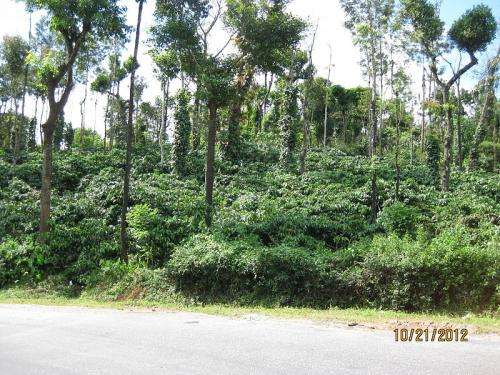April 8, 2014 weblog
Computer simulation shows adding trees to coffee growing land can increase yields

(Phys.org) —A computer simulation created and run by a pair of researchers at Humboldt State University, in California shows that coffee growers in Jamaica could improve coffee harvests if they planted trees in some of their cropland. The two, Steven Railsback and Matthew Johnson have published a paper describing their simulation and results in Proceedings of the National Academy of Sciences.
Whether to dedicate land specifically to a single crop (land sparing) versus mixing one crop with others (land sharing) has been a problem farmers (and researchers) have been working on for thousands of years. In this new effort, the researchers at Humboldt looked specifically at the way coffee plants are grown to see if they could figure out a way to improve yields. Most coffee growers tend to dedicate land to coffee plants—experience over the years has shown it to be the most productive. But there is a known problem—the coffee berry borer—a beetle that bores into a coffee berry to lay its eggs, stealing profits from farmers. Railsback and Johnson noted that a certain kind of bird, a warbler, is a predator of the beetles that eat coffee beans. But, because they have nowhere to roost in land dedicated to coffee growing, they don't offer farmers much help. They wondered what would happen if farmers planted just enough trees among the coffee plants to provide roosting places for the birds—would that cause a decrease in berry borers and thus an increase in harvests? To find out, instead of trekking to Jamaica to talk farmers into giving it a try, the two created a computer model that simulates various bird, beetle and coffee tree environments. Interestingly, they found that if they set the parameters just right, the loss in production due to less land devoted to coffee plants and tree shade, could be more than made up for by less losses due to the berry borer.
The key, the two suggest, lies in the right mix of ingredients—their simulation showed that an increase in production could only be achieved using sun coffee plants, versus shade coffee, for example. Farmers would also have to plant just the right number of trees, to create small groves, for example, instead of forests.
The next step now will be to see if the findings by the team can be confirmed in a real world setting, i.e. field studies. If they prove successful, that might be enough to cause some farmers to give it a try.
More information: Effects of land use on bird populations and pest control services on coffee farms, Steven F. Railsback, PNAS, DOI: 10.1073/pnas.1320957111
Abstract
Global increases in both agriculture and biodiversity awareness raise a key question: Should cropland and biodiversity habitat be separated, or integrated in mixed land uses? Ecosystem services by wildlife make this question more complex. For example, birds benefit agriculture by preying on pest insects, but other habitat is needed to maintain the birds. Resulting land use questions include what areas and arrangements of habitat support sufficient birds to control pests, whether this pest control offsets the reduced cropland, and the comparative benefits of "land sharing" (i.e., mixed cropland and habitat) vs. "land sparing" (i.e., separate areas of intensive agriculture and habitat). Such questions are difficult to answer using field studies alone, so we use a simulation model of Jamaican coffee farms, where songbirds suppress the coffee berry borer (CBB). Simulated birds select habitat and prey in five habitat types: intact forest, trees (including forest fragments), shade coffee, sun coffee, and unsuitable habitat. The trees habitat type appears to be especially important, providing efficient foraging and roosting sites near coffee plots. Small areas of trees (but not forest alone) could support a sufficient number of birds to suppress CBB in sun coffee; the degree to which trees are dispersed within coffee had little effect. In simulations without trees, shade coffee supported sufficient birds to offset its lower yield. High areas of both trees and shade coffee reduced pest control because CBB was less often profitable prey. Because of the pest control service provided by birds, land sharing was predicted to be more beneficial than land sparing in this system.
Journal information: Proceedings of the National Academy of Sciences
© 2014 Phys.org



















